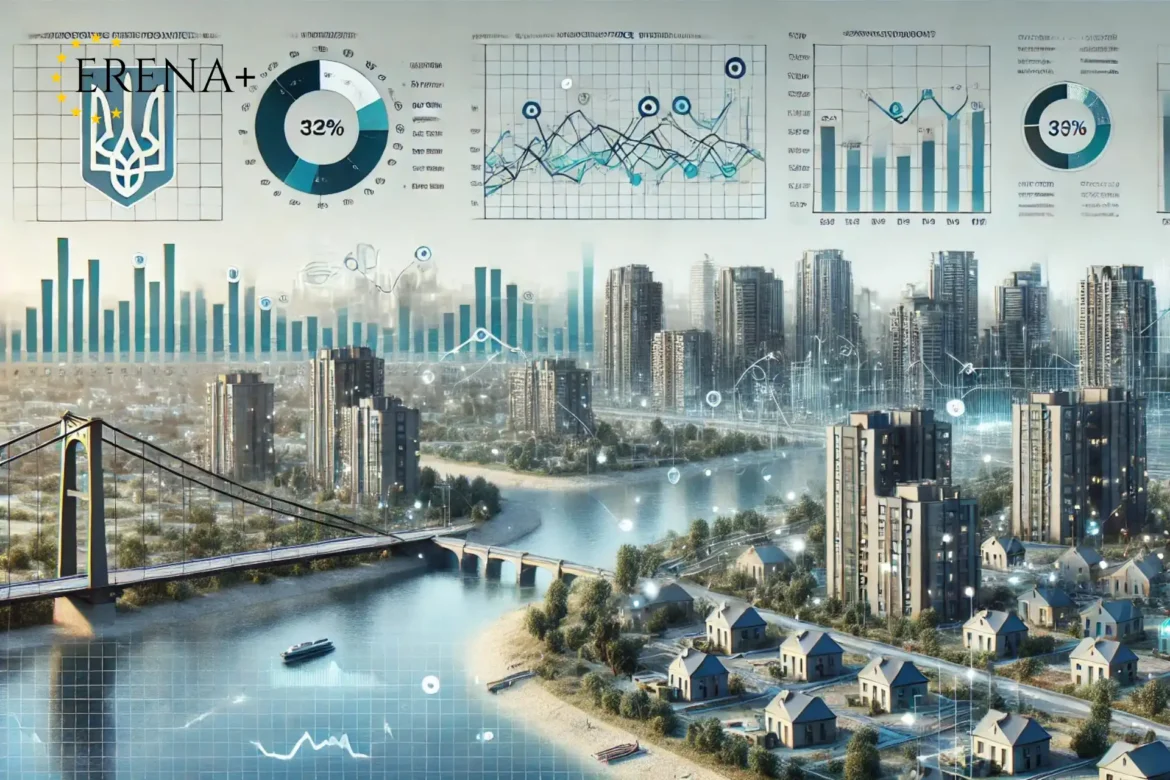The Russian aggression that began in February 2022 significantly impacted Ukraine’s real estate market, particularly in Kyiv. Residential property prices in the capital underwent notable changes influenced by economic instability, reduced purchasing activity, and shifts in supply and demand. Here’s an overview of how housing prices in Kyiv have evolved since the start of the war.
1. Market Freeze in the Initial Months of the War (February–March 2022)
At the onset of active hostilities, Kyiv’s real estate market essentially came to a standstill. Key changes during this period included:
• Sharp decline in demand. A significant portion of the population evacuated from Kyiv, prioritizing safety, which brought market activity to a halt.
• Withdrawal of property listings. Many sellers pulled their properties off the market, waiting for stability to return.
• Minimal transaction activity. While formal property prices saw little adjustment, the lack of transactions made real price dynamics unclear.
This phase was characterized by uncertainty, leaving the market in a state of suspension.
2. Gradual Recovery of Market Activity (April–June 2022)
Following the successful defense of Kyiv and partial return to normalcy, the real estate market began to recover slowly:
• Demand for rental housing surged significantly as returning residents sought temporary accommodations, driving rental prices up by 15–20%.
• Demand for property purchases remained low, but prices in the secondary market started to stabilize.
• Increased interest in safer areas. Buyers favored properties in relatively secure districts away from high-risk zones.
While the market remained cautious, the initial signs of recovery were evident.
3. Economic Challenges (Second Half of 2022)
By mid-2022, the market began facing additional challenges:
• Inflation and currency devaluation. Economic instability reduced the purchasing power of the population.
• Slowdown in construction. Financing issues and disrupted supply chains led to a suspension of many new projects.
• Limited secondary market supply. Ready-to-occupy housing remained more desirable, but its availability was constrained.
As a result, secondary market prices held steady, while the primary market encountered more severe difficulties.
4. Resilience of the Market in 2023
By 2023, Kyiv’s real estate market began showing signs of stabilization, supported by several factors:
• Population return. The gradual return of residents to Kyiv and their adaptation to wartime realities boosted demand.
• Increased interest from investors. Real estate regained appeal as a tool for preserving capital amidst economic uncertainty.
• Rising demand for energy-efficient housing. Properties in modern buildings with autonomous heating and backup power systems became especially sought after.
Although housing prices began to increase, they remained below pre-war levels.
5. Key Market Trends
Despite the ongoing conflict, new trends emerged in Kyiv’s real estate market:
• Popularity of suburban areas. Many residents started favoring properties in suburbs such as Irpin and Bucha, where prices were more affordable.
• Reduced new construction. The slowdown in launching new projects limited supply, which supported prices for existing housing.
• Demand for temporary housing. The rental market remained active, especially among those returning to Kyiv on a temporary basis.
6. Future Prospects for the Real Estate Market
The further development of Kyiv’s real estate market will depend on several key factors:
• The military situation. The end of hostilities and the restoration of security will be critical for the market’s recovery.
• Economic stabilization. Strengthening the hryvnia, reducing inflation, and increasing household incomes could revitalize purchasing activity.
• Reconstruction efforts. Investments in infrastructure and residential complexes will play a vital role in restoring market activity.
Conclusion
Kyiv’s real estate market has demonstrated resilience and adaptability even in times of crisis. Despite significant challenges such as economic instability and the ongoing war, both demand and prices have shown signs of recovery. Full revival will require stable security, government support, and time to rebuild infrastructure and reestablish confidence in the construction sector.
Dynamics of Residential Property Prices in Kyiv After the Onset of the War in Ukraine
837
previous post

